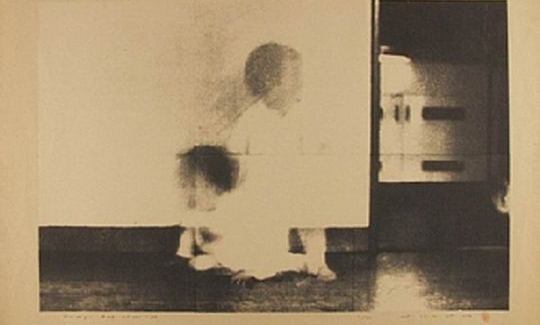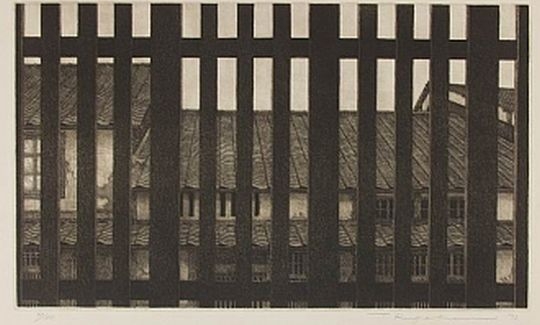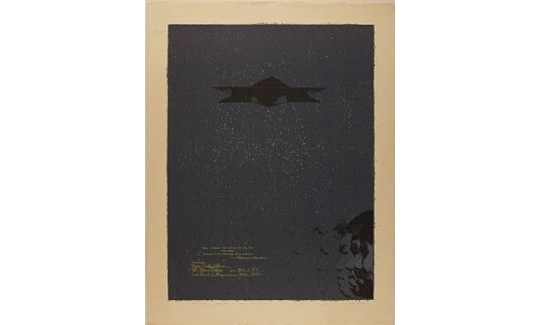Over the years, Ms. Shulamit Rubinfien of California has donated many Japanese works of art to the Tikotin Museum of Japanese Art, including decorated folding screens (byobu), and modern Japanese prints. Among them is a 19th century folding screen embellished with autumn foliage and chrysanthemums on a gilded background. The painting is a combination of realism and abstraction in the style of the Rimpa school. An 18th century screen displays peasants bending over their labour in the rice paddies.
Several of the modern prints in the Rubinfien Collection are the works of Tetsuya Noda (b.1940), who completed his studies at the Tokyo University of Art in 1963. At the age of 28 he won the first of his many awards at the International Print Biennale in Tokyo. He generally employs mixed media - woodblock print, photography, silkscreen, etc. In 1991, Noda became a professor in the Faculty of Art at Tokyo University. He is known especially for his "Diaries", a series of works documenting both his personal life and Japan's revival during the Showa period (1926-1989).
In September 2005 Shulamit and her late husband David Rubinfien donated their collection of painted scrolls to the Museum, most of them ink paintings in the Zen and haiga styles of the 19th and 20th centuries. These paintings also integrate haiku poems.
Ink paintings in the Zen style were usually created by monks who were not professional artists, because they could thus illustrate the process intended to bring them to spiritual enlightenment. The Zen masters soon realized that an artist could present his vision with brush and ink, to express illumination after sitting silently in meditation. They averred that the truth is to be found even in inanimate nature - a branch of a tree, a fading flower, a grain of sand. The search for the meaning of life in all its manifold aspects has sharpened the sensibilities and awareness of Chinese and Japanese artists of all times.
The ink paintings of the Zen monks convey a sense of spontaneity, and their simplicity and economy present us with challenges that it is not easy to meet. They attempt to embody the Zen spirit by means of a few free, unrestrained lines that are not deliberate, but they are, in fact, the outcome of continual practice and application. A few strokes of ink on a white background can suggest a whole universe. The empty spaces play just as important a role, because the viewers must themselves visualize what is lacking. Among these works one can find portraits of illustrious Zen monks, motifs from Zen philosophy, animals, views, and much more. They are all characterized by the ability to depict, with strokes of the brush and patches of ink in a limitless variety of shades, a rich and colourful world.



